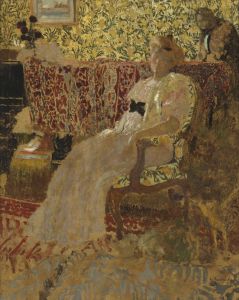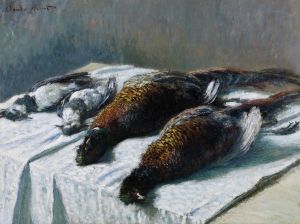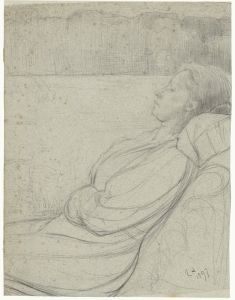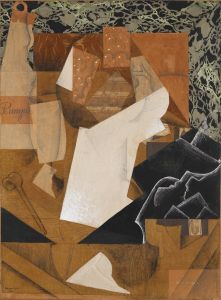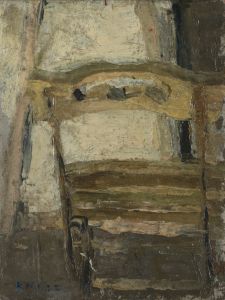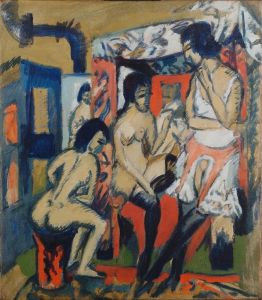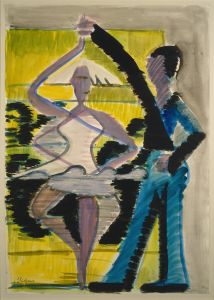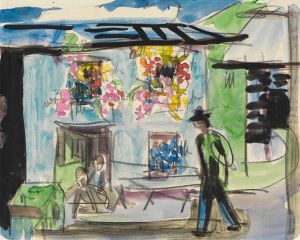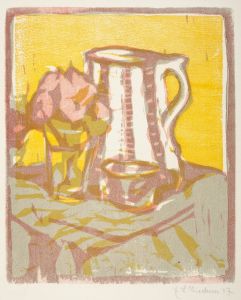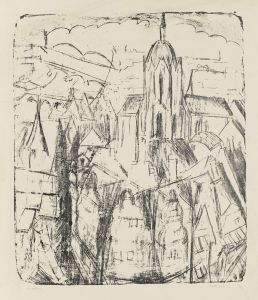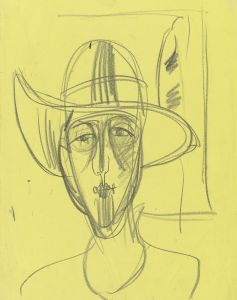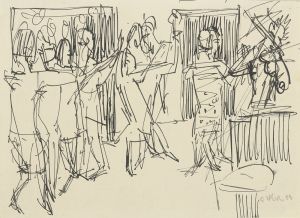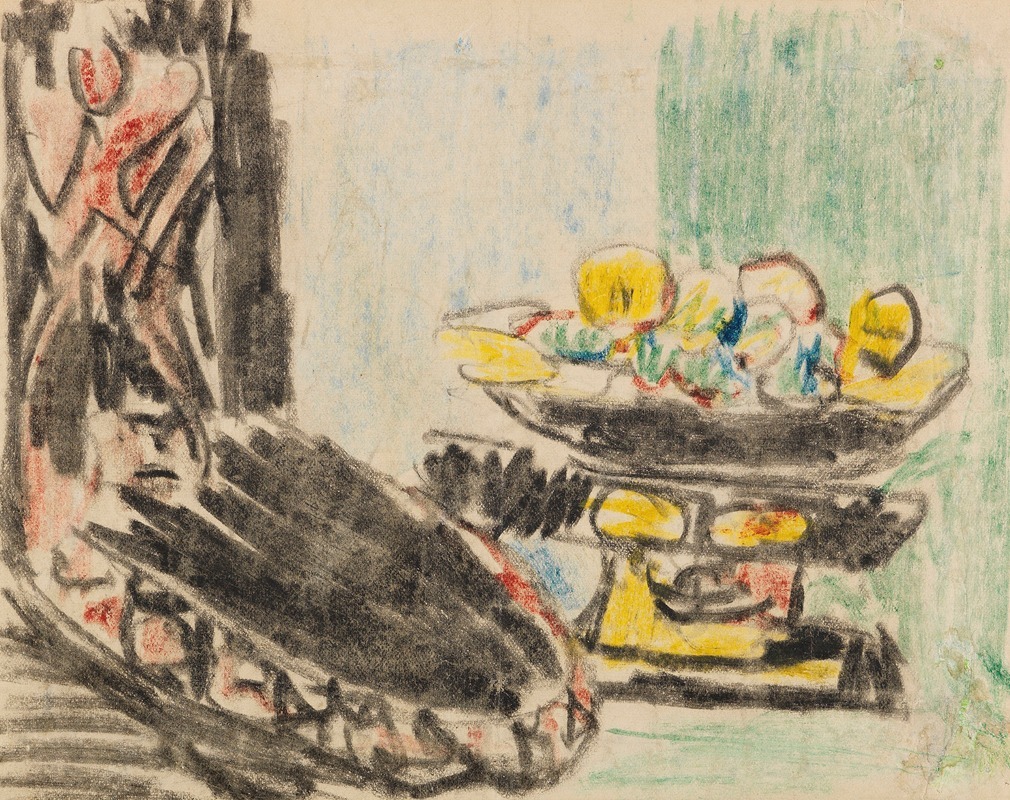
Stillleben neben geschnitztem Stuhl
A hand-painted replica of Ernst Ludwig Kirchner’s masterpiece Stillleben neben geschnitztem Stuhl, meticulously crafted by professional artists to capture the true essence of the original. Each piece is created with museum-quality canvas and rare mineral pigments, carefully painted by experienced artists with delicate brushstrokes and rich, layered colors to perfectly recreate the texture of the original artwork. Unlike machine-printed reproductions, this hand-painted version brings the painting to life, infused with the artist’s emotions and skill in every stroke. Whether for personal collection or home decoration, it instantly elevates the artistic atmosphere of any space.
Ernst Ludwig Kirchner's painting Stillleben neben geschnitztem Stuhl (translated as "Still Life beside Carved Chair") is a work by the German Expressionist artist, who was a founding member of the influential art movement Die Brücke (The Bridge). Kirchner, born in 1880 in Aschaffenburg, Germany, is known for his vivid use of color, dynamic compositions, and exploration of modern life and psychological depth in his works.
This particular painting, Stillleben neben geschnitztem Stuhl, is an example of Kirchner's interest in still life compositions, a genre he explored alongside his more well-known depictions of urban scenes and human figures. The painting features a carved chair, which is a recurring motif in Kirchner's work, reflecting his fascination with handcrafted furniture and objects. The carved chair in this painting may have been part of Kirchner's own studio furnishings, as he often incorporated elements of his immediate environment into his art.
Kirchner's still life paintings often go beyond traditional representations of inanimate objects, infusing them with a sense of movement and emotional intensity. In Stillleben neben geschnitztem Stuhl, the interplay of bold colors and angular forms creates a dynamic composition that reflects the artist's Expressionist style. The painting demonstrates Kirchner's ability to transform everyday objects into vibrant and evocative works of art.
The exact date of the painting's creation is not specified in available records, but it likely falls within the period of Kirchner's most active years, between the early 1910s and the 1920s. During this time, Kirchner was deeply engaged in developing his unique artistic voice, influenced by both traditional German art and modernist movements.
As with many of Kirchner's works, Stillleben neben geschnitztem Stuhl reflects his interest in the relationship between art and craftsmanship. The carved chair, a central element of the composition, underscores the artist's appreciation for the tactile and material qualities of objects. This focus on craftsmanship aligns with the broader ideals of the Die Brücke movement, which sought to bridge the gap between traditional and modern art forms.
The painting is held in a private collection or museum, but specific details about its current location or provenance are not widely documented. Kirchner's works are highly regarded in the art world, and his contributions to Expressionism have left a lasting impact on modern art.
This brief overview provides a factual introduction to Stillleben neben geschnitztem Stuhl, based on the available historical information about Kirchner and his artistic practice.





